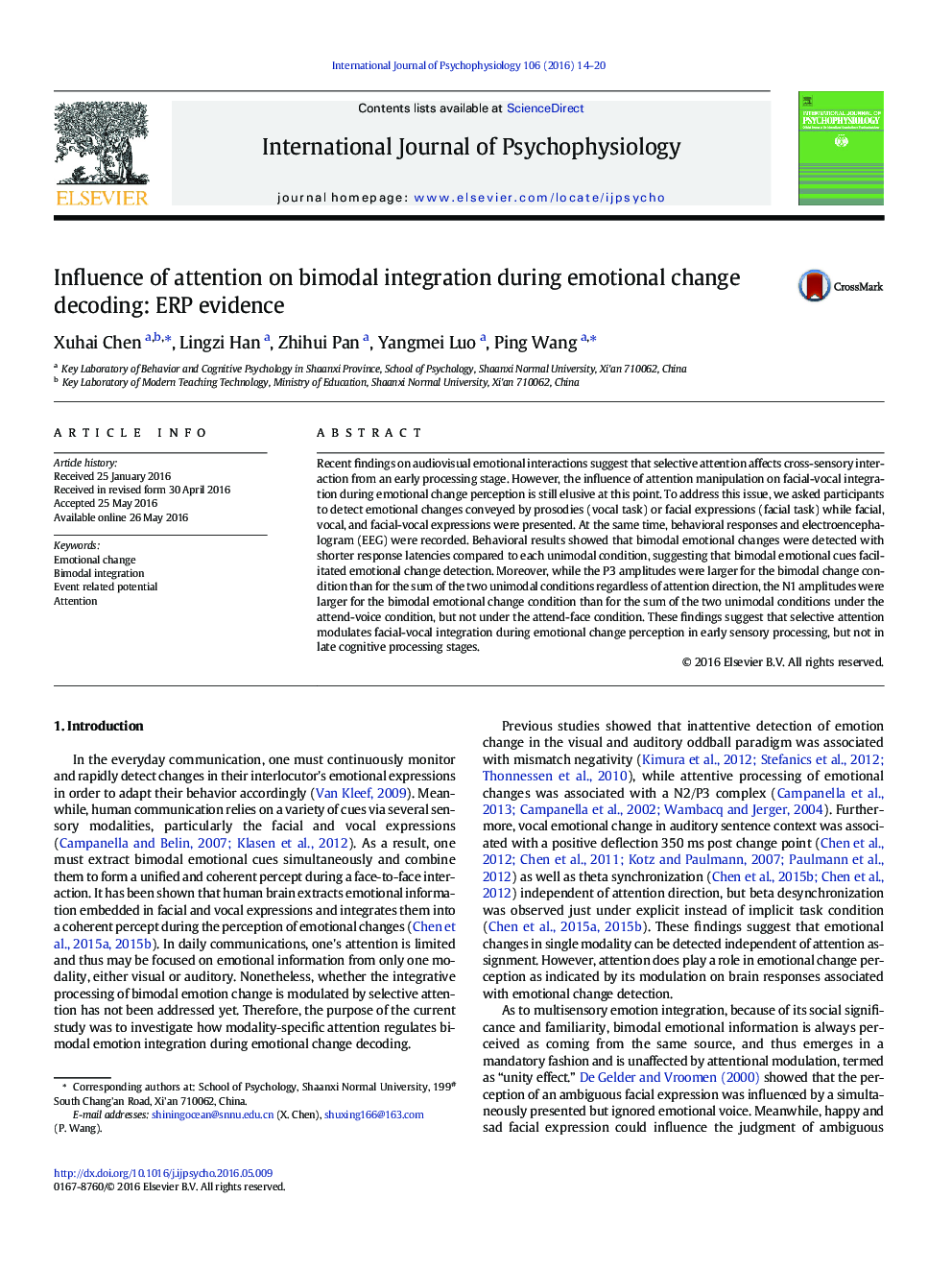| کد مقاله | کد نشریه | سال انتشار | مقاله انگلیسی | نسخه تمام متن |
|---|---|---|---|---|
| 929769 | 1474390 | 2016 | 7 صفحه PDF | دانلود رایگان |
• Bimodal emotional cues facilitate emotional change detection.
• Integration effect on P3 component is impervious to attention.
• Integration effect on N1 component is modulated by selective attention.
Recent findings on audiovisual emotional interactions suggest that selective attention affects cross-sensory interaction from an early processing stage. However, the influence of attention manipulation on facial-vocal integration during emotional change perception is still elusive at this point. To address this issue, we asked participants to detect emotional changes conveyed by prosodies (vocal task) or facial expressions (facial task) while facial, vocal, and facial-vocal expressions were presented. At the same time, behavioral responses and electroencephalogram (EEG) were recorded. Behavioral results showed that bimodal emotional changes were detected with shorter response latencies compared to each unimodal condition, suggesting that bimodal emotional cues facilitated emotional change detection. Moreover, while the P3 amplitudes were larger for the bimodal change condition than for the sum of the two unimodal conditions regardless of attention direction, the N1 amplitudes were larger for the bimodal emotional change condition than for the sum of the two unimodal conditions under the attend-voice condition, but not under the attend-face condition. These findings suggest that selective attention modulates facial-vocal integration during emotional change perception in early sensory processing, but not in late cognitive processing stages.
Journal: International Journal of Psychophysiology - Volume 106, August 2016, Pages 14–20
